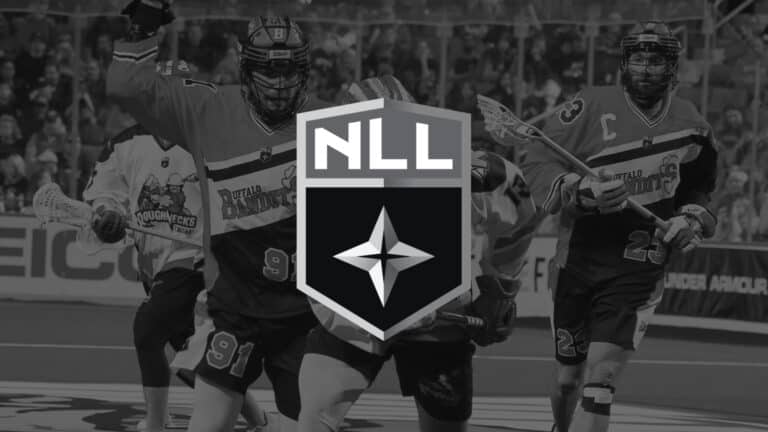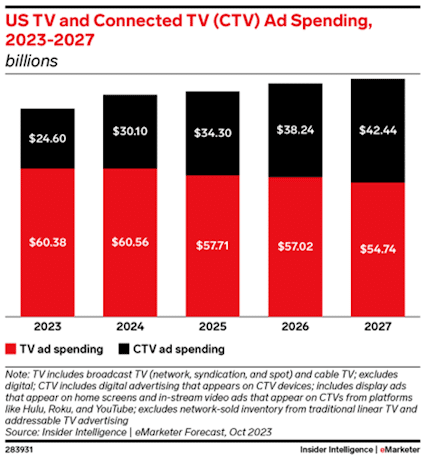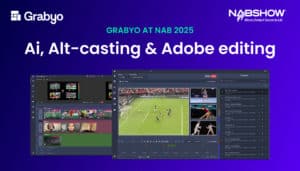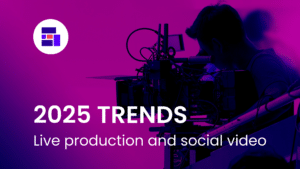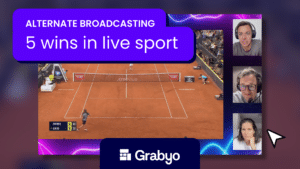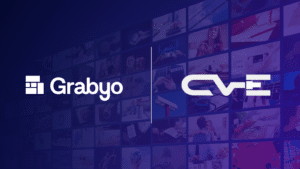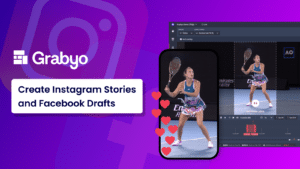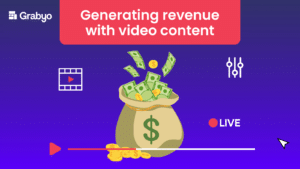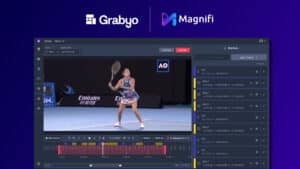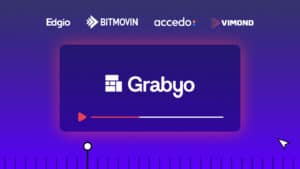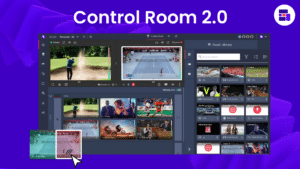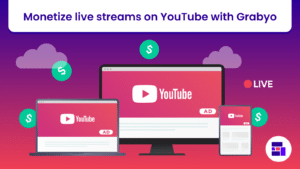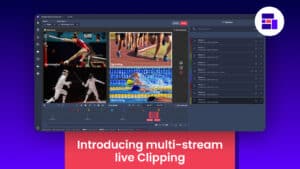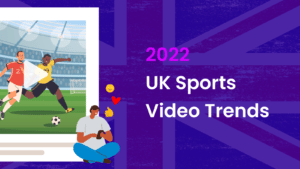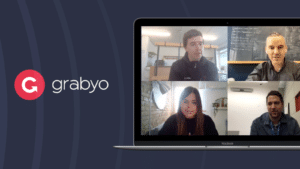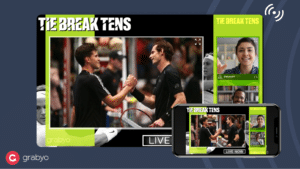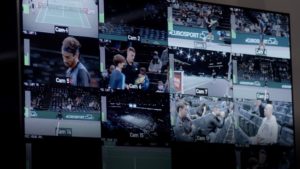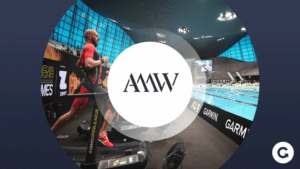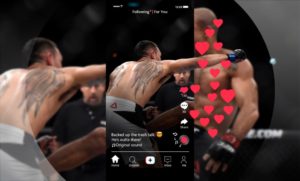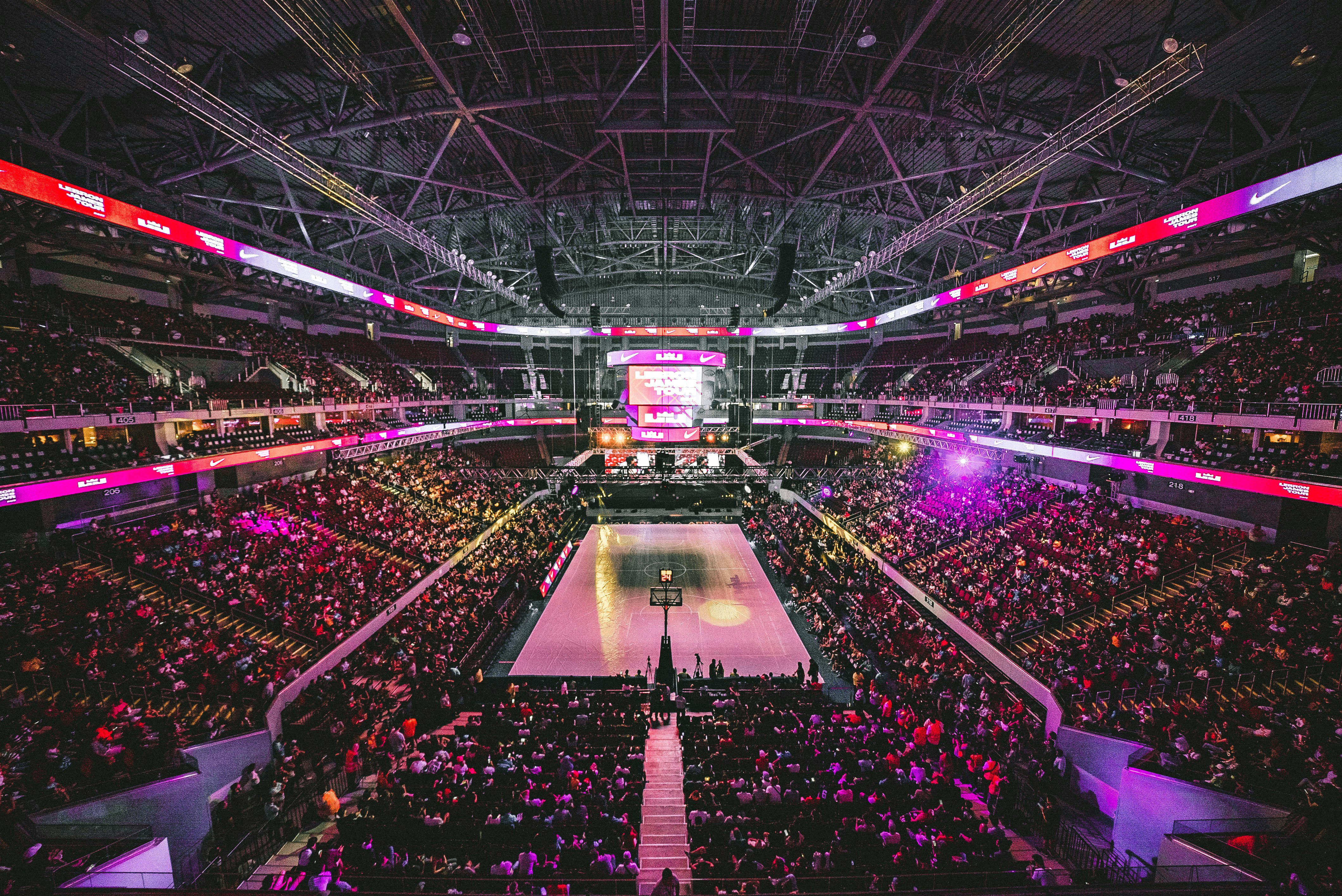
The revenue stream
Maximizing return from live content
Live content monetization: turning broadcasts into cash cows
In the rapidly evolving landscape of media consumption, broadcasters and rights holders face both unprecedented challenges and opportunities in monetizing their live content. Traditional revenue streams like linear TV advertising and subscriptions have been redefined by digital innovation, and creative teams are under pressure to do more with less.
This blog delves into strategies that broadcasters can employ to not only sustain but grow their revenue in this competitive market. From leveraging advanced ad insertion techniques and creating engaging second-screen experiences to harnessing the power of influencers and interactive content, we will explore the modern methods that are transforming live broadcasting into a lucrative enterprise. Let’s dive into the various routes broadcasters and rights holders can take!
#1 Monetization via ad insertion
To get the ball rolling, let’s start with server-side ad insertion, also known as “dynamic ad insertion” or “ad stitching.” Why? Because it’s arguably one of the most lucrative ways to generate revenue from live content.
In traditional TV ad insertion, all viewers are served the exact same commercial, a one-to-many approach that lacks user personalization. Dynamic ad insertion, on the other hand, delivers personalized ads to viewers based on data insights, such as location and time of day. Combine this with Over-The-Top (OTT) video delivery over the internet, and you can see why this method is considered the holy grail of live content monetization.
Dynamic ad insertion stands out for its ability to tailor the viewing experience by presenting ads that resonate with individual viewers, driving higher engagement and effectiveness. This personalized approach is not only beneficial for advertisers but also enhances viewer satisfaction by showing relevant content.
Integrating SCTE-104 and SCTE-35 protocols ensures smooth ad transitions in live broadcasts, OTT streams, and YouTube streams via ad markers, making the ad experience seamless and non-intrusive. As a result, broadcasters can optimize their ad inventory and significantly boost revenue, making dynamic ad insertion a cornerstone of modern live content monetization strategies.
#2 Digital streams and alternate broadcasts
Alternate broadcasts, or “alt-casting”, is becoming a valuable tactic for rights holders to expand their audience reach and tap into new demographics. This approach involves repurposing broadcast coverage and enhancing it with new elements, such as multi-language commentary, tailored graphics, or new segments like celebrity appearances.
The NLL Watch Party, debuted in March 2023 for the Toronto Rock vs. Philadelphia Wings game, showcases this strategy. Delivered on ESPN+ in the US and TSN+ in Canada, the NLL used Grabyo to produce an alternate broadcast with special guest commentators and interactive graphics encouraging social media engagement using #NLLWATCHPARTY.
A key element of successful alt-casting is interactivity. The NLL Watch Party created an online forum for fans to discuss the game and interact with the broadcast, via polls and chats, enhancing the viewer experience and driving up watch times.
Creating behind the scenes buzz with shoulder programming
While alternate broadcasting and shoulder programming serve different purposes, they are both essential strategies for enhancing viewer engagement and expanding monetization opportunities.
The production was managed by a remote, two-person crew—a director and a technical director (TD). The TD handled video switching, layout setup, and talent cues, while the director managed fan comments on social media.
The benefits of alt-casting for broadcasters and rights holders are significant. It allows them to reach new audiences by tailoring content to different languages and interests, attracting a more diverse viewership.
Interactive elements and real-time social media integration increase engagement, keeping viewers invested in the broadcast. Customized content and special features enhance the viewer experience, creating a richer, more enjoyable broadcast.
With higher engagement and reach, there are more opportunities for advertising and sponsorship deals, boosting revenue. Additionally, providing an interactive and personalized experience helps to build brand loyalty, fostering a loyal fan base.
Alt-casting, live sports programming and more
#3 Pay-per-view (PPV) and Subscription Models
PPV and subscription models are two highly effective monetization strategies for broadcasters and have been around for some time.
Pay-Per-View (PPV) offers viewers the flexibility to consume content on a one-time basis without a long-term commitment. This model is particularly appealing for viewers interested in specific events, such as major boxing matches, MMA fights, wrestling shows, and live concerts. PPV allows fans to enjoy premium content without the interruptions of advertisements typically found on free-to-air channels or streams. By paying a fee for each event, viewers gain access for a finite period, making it a convenient option for those who only wish to see a single event or release.
Subscription Models provide a steady revenue stream by requiring viewers to pay a regular fee for unlimited access to a broadcaster’s content library over a defined period, such as a month, year, or sports season. This model fosters customer loyalty and provides consistent income, as subscribers are likely to stay engaged with the platform to get their money’s worth. Popular examples include streaming services like Netflix, Disney+, and sports networks offering season passes. Subscribers can benefit from an ad-free experience, on-demand viewing, and exclusive content, making it a comprehensive and appealing option for dedicated viewers.
Both PPV and subscription models cater to different viewer preferences, offering flexibility and value. For broadcasters, these models not only enhance viewer satisfaction but also diversify revenue streams, ensuring financial stability and growth in a competitive market. By leveraging these monetization strategies, broadcasters can attract and retain a broader audience, ultimately driving higher engagement and profitability.
#4 Social media and digital platform integration
Integrating social media and digital platforms into live broadcasts offers powerful ways to enhance visibility and generate revenue directly from the stream. By promoting and multicasting live streams across various social media channels, broadcasters can significantly increase traffic and boost revenue through in-stream monetization techniques.
For instance, Instagram has over 2 billion active users, with a strong presence among 18-34-year-olds, making it a prime platform for reaching younger audiences with live streams. Facebook, with its 2.9 billion monthly active users, offers extensive reach across a broad demographic spectrum, ideal for monetizing live sessions. Meanwhile, TikTok, boasting over 1 billion users, is particularly influential among Gen Z, who make up about 60% of its user base, making it a powerful platform for engaging a younger audience through creative in-stream features.
In-stream ads on these platforms engage viewers and attract revenue from advertisers eager to leverage high-traffic channels. Moreover, integrating shoppable features, virtual gifts, and direct tipping during live streams creates additional revenue streams. When viewers share their experiences or reactions on social media, they amplify the reach and engagement of the broadcast. For example, user-generated content on TikTok can lead to viral trends, enhancing visibility and driving further in-stream transactions.
By harnessing the synergy between live broadcasts and digital platforms, broadcasters can tap into the unique strengths of each channel to maximize both engagement and revenue, creating a dynamic ecosystem that reaches diverse audience segments effectively.
#5 Sponsorship Opportunities
As consumers have increasingly gravitated towards ad-free streaming, advertisers have had to adapt. Unlike traditional linear viewing, which interrupts the experience, sponsored content is now seamlessly embedded within the content itself, making it more palatable for viewers.
This trend is particularly prominent on platforms like YouTube and Twitch, which have innovatively embraced sponsored content. Examples include graphic overlays, product demonstrations, or merchandising within the stream itself. Traditional sponsors of in-person events can also replicate their efforts online, such as the Mick George Skip Challenge at Cambridge United, which has garnered its own online viewership across the club’s digital channels.
For rights holders and influencers (which we’ll discuss later), this opens the door to financial support, enhancing the quality and breadth of their content. With increased resources, they can experiment with new content types, ideas and destinations, further increasing their return on investment by reaching new markets.
In this context, less can actually be more for brands sponsoring these initiatives. For advertisers, the prospect of reaching niche, more concentrated audiences means they can achieve better quality and recall compared to traditional television ads, which often require a broader approach and heavier investment for key ad slots.
#6 Data Monetization
Data monetization is transforming the landscape of broadcasting by leveraging audience analytics to provide valuable insights to advertisers. As we’ve already seen, over-the-top (OTT) platforms, with their IP-connected devices and “computer screen format” for viewership, enable a shift from generalized to highly targeted advertising. This shift is designed to increase consumer interest in the ads they see, yielding better results for advertisers.
By collecting and analyzing viewer data, broadcasters can offer advertisers detailed demographics and behavior patterns, enabling them to craft more targeted and effective campaigns. Personalized advertising, driven by this data, enhances viewer engagement by delivering ads that resonate with individual interests and preferences. Furthermore, partnerships with data analytics companies can significantly enhance ad targeting capabilities, allowing broadcasters to refine their monetization strategies and maximize revenue.
This data-driven approach not only improves the relevance and impact of advertising but also creates a more tailored and engaging viewing experience.
How is the future of sports streaming set to change?
As sports streaming grows in Europe, fragmentation and competition increase with new entrants like DAZN and Prime Video challenging traditional players. The future of sports streaming lies in balancing direct-to-consumer strategies with partnerships to capture and retain audiences.
#7 Leveraging Influencers for Greater Reach and Revenue
In the evolving landscape of live broadcasting, leveraging influencers has emerged as a powerful monetization strategy. Influencers, with their dedicated followings and authentic engagement, can significantly boost the reach and impact of live broadcasts. By partnering with influencers, broadcasters can tap into established audiences and drive engagement in a way that traditional advertising often struggles to achieve.
Influencers can enhance live streams through various means: they might host live sessions, offer exclusive behind-the-scenes content, or even participate as guest commentators, adding a personal touch that resonates with their followers. For instance, during a live gaming event, popular streamers can provide live commentary, engage in real-time interactions with fans, and promote related merchandise or in-game purchases. Similarly, a fashion brand might collaborate with a fashion influencer to host a live shopping event, showcasing new collections and providing exclusive discount codes to viewers.
This influencer-driven approach not only enhances content by integrating it with well-known personalities but also creates additional revenue streams through sponsorship deals and affiliate marketing, like Wimbledon’s #GameSetDuet on TikTok with influencers Formz and isheverything. Influencers bring a unique blend of authenticity and reach, driving higher engagement and fostering a more interactive viewer experience. As broadcasters continue to explore innovative monetization strategies, influencers represent a key component in maximizing the financial potential of live content while building stronger connections with diverse audience segments.
#8 Live commerce integration
Live commerce integration represents a powerful evolution in the intersection of live broadcasting and online shopping. By combining live video streaming with real-time shopping capabilities, live commerce creates an engaging, interactive experience that captivates viewers and drives sales.
For example, during a live fashion show, viewers can see models showcasing new clothing lines and purchase items directly from the stream using clickable links. Similarly, in a live tech product launch, viewers can watch demonstrations of new gadgets and place orders in real-time through integrated shopping features.
This approach leverages live video to showcase products, demonstrate their use, and answer viewer questions in real-time, enhancing the shopping experience with a personal touch. The real-time interaction fosters a dynamic environment where viewers feel connected and engaged, boosting their likelihood to purchase.
For broadcasters, integrating live commerce provides a lucrative opportunity to monetize content through direct sales and enhanced viewer engagement. By offering a seamless blend of entertainment and shopping, live commerce not only enriches the viewer experience but also opens new revenue streams, making it a compelling route for modern live broadcasting.
The path forward: Leveraging modern strategies for broadcast success
As the media landscape continues to evolve, broadcasters and rights holders must adapt to new monetization strategies to maximize the profitability of their live content. Embracing advanced techniques like dynamic ad insertion, which allows for personalized and targeted advertising, can significantly boost revenue by enhancing viewer engagement. Similarly, sponsorship opportunities and live commerce integration offer innovative ways to enrich the viewer experience while creating additional revenue streams. Alternate broadcasting and influencer partnerships further enhance this dynamic environment, tapping into diverse audience segments and fostering interactive experiences.
By leveraging these cutting-edge strategies, broadcasters not only diversify their revenue streams but also ensure that their content remains relevant and compelling in a highly competitive market. The convergence of digital innovations with traditional broadcasting methods opens up unprecedented opportunities for growth and engagement. As we move forward, those who can effectively integrate these modern approaches will be well-positioned to thrive in the evolving world of live broadcasting.

